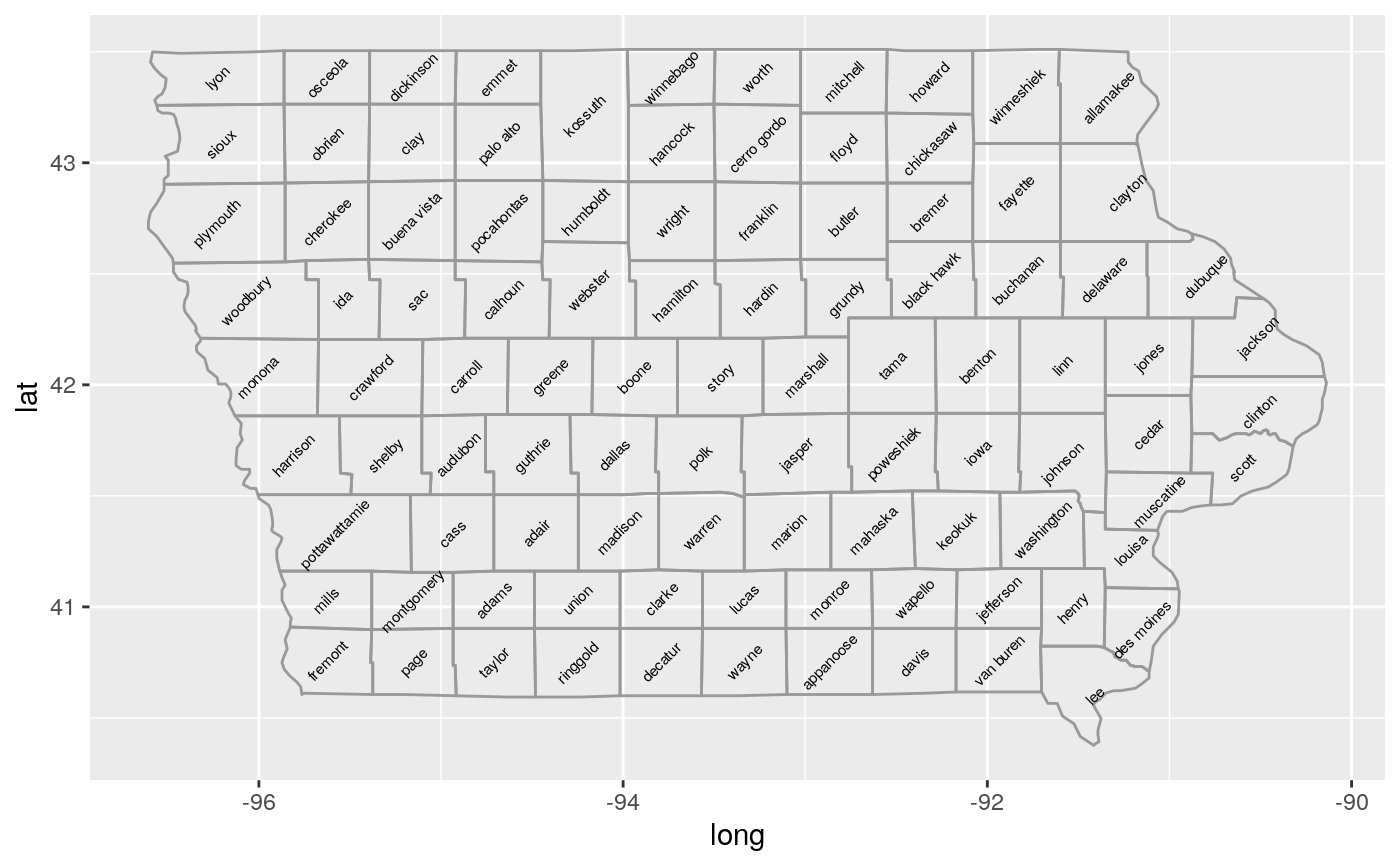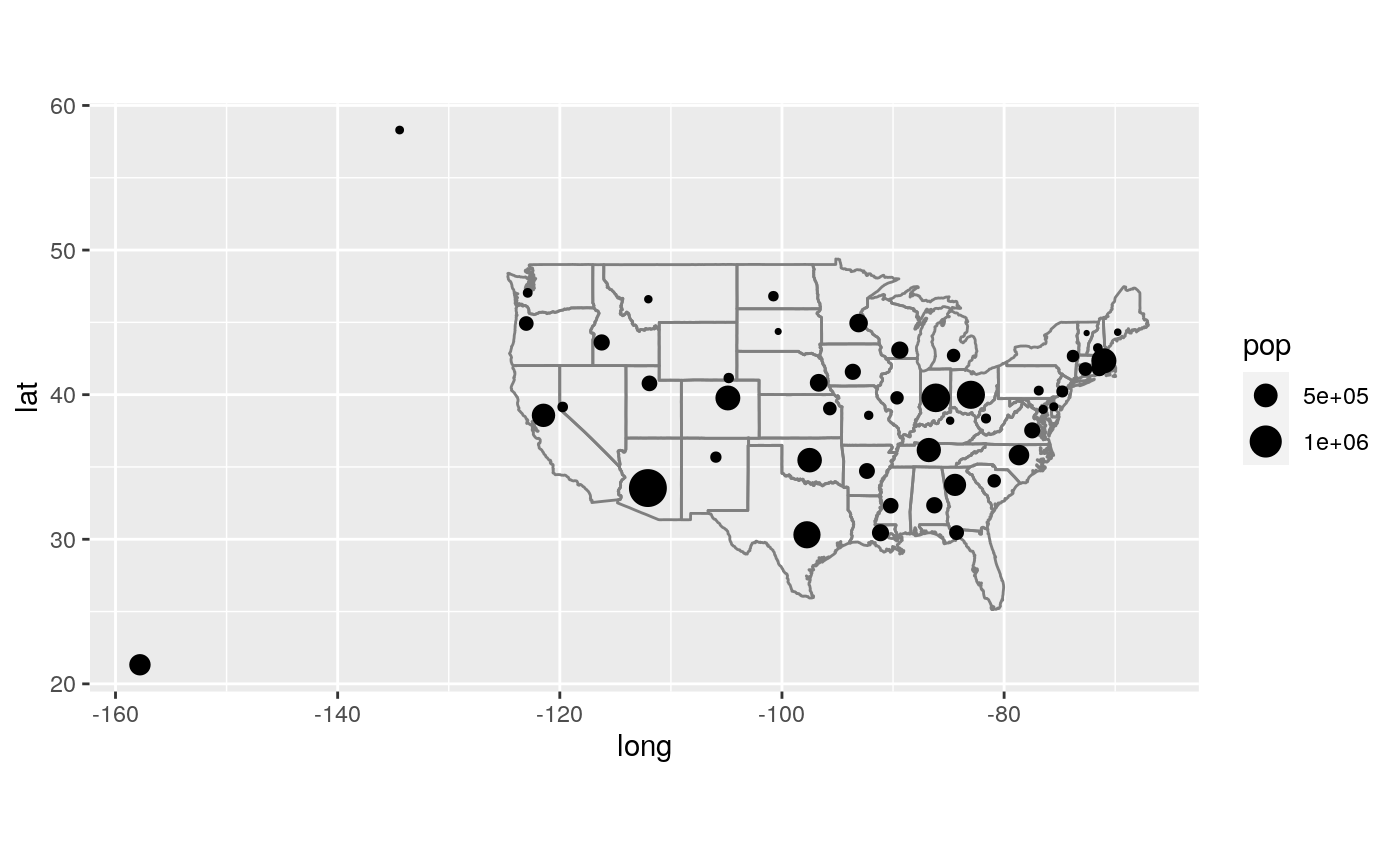This is a quick and dirty way to get map data (from the maps package) on to your plot. This is a good place to start if you need some crude reference lines, but you'll typically want something more sophisticated for communication graphics.
borders( database = "world", regions = ".", fill = NA, colour = "grey50", xlim = NULL, ylim = NULL, ... )
Arguments
| database | map data, see |
|---|---|
| regions | map region |
| fill | fill colour |
| colour | border colour |
| xlim, ylim | latitudinal and longitudinal ranges for extracting map
polygons, see |
| ... | Arguments passed on to ruleEither mappingSet of aesthetic mappings created by dataThe data to be displayed in this layer. There are three
options:If statThe statistical transformation to use on the data for this layer, as a string. positionPosition adjustment, either as a string, or the result of a call to a position adjustment function. show.legendlogical. Should this layer be included in the legends?
inherit.aesIf na.rmIf |
Examples
if (require("maps")) { ia <- map_data("county", "iowa") mid_range <- function(x) mean(range(x)) seats <- do.call(rbind, lapply(split(ia, ia$subregion), function(d) { data.frame(lat = mid_range(d$lat), long = mid_range(d$long), subregion = unique(d$subregion)) })) ggplot(ia, aes(long, lat)) + geom_polygon(aes(group = group), fill = NA, colour = "grey60") + geom_text(aes(label = subregion), data = seats, size = 2, angle = 45) }if (require("maps")) { data(us.cities) capitals <- subset(us.cities, capital == 2) ggplot(capitals, aes(long, lat)) + borders("state") + geom_point(aes(size = pop)) + scale_size_area() + coord_quickmap() }if (require("maps")) { # Same map, with some world context ggplot(capitals, aes(long, lat)) + borders("world", xlim = c(-130, -60), ylim = c(20, 50)) + geom_point(aes(size = pop)) + scale_size_area() + coord_quickmap() }


